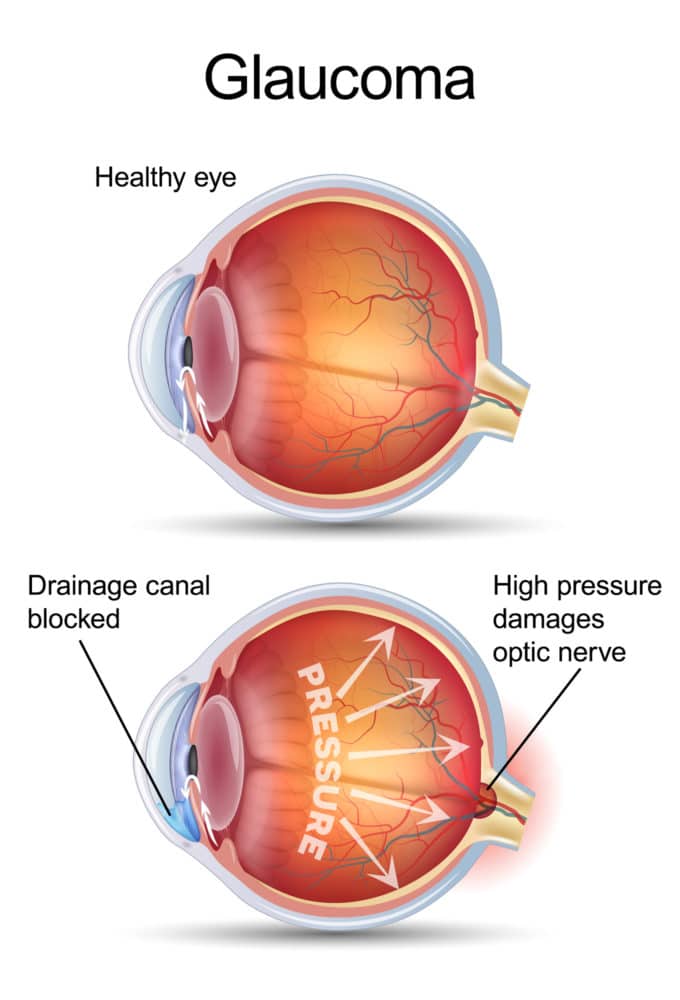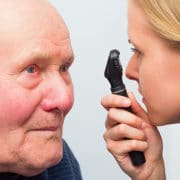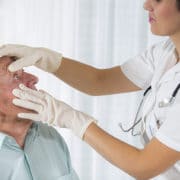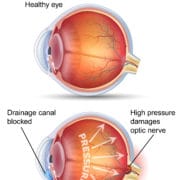Glaucoma Risk Factors: Knowing The Warning Signs

Let’s take a moment to consider what glaucoma is, what signs and symptoms people should note, and some risk factors that people should be aware of.
About Glaucoma
Glaucoma is one of the leading causes of irreversible vision loss in the world. The condition occurs when the increased pressure within the eye causes damage to the optic nerve. Glaucoma is an irreversible condition, unfortunately, but early detection and treatment will help slow the vision loss and preserve the patient’s vision in the process.
Signs and Symptoms of Glaucoma
The most common signs and symptoms of open-angle glaucoma include:
- Blind spots in central vision (often in both eyes)
- Blind spots in peripheral vision (often in both eyes)
- Tunnel vision
The most common signs and symptoms of acute angle-closure glaucoma include:
- Severe headaches
- Ocular pain
- Nausea and vomiting
- Blurry vision
- Halos
- Red eye
A Family History of Glaucoma
If other members of your family have suffered from glaucoma, particularly a parent or grandparent, there is a greater risk of developing glaucoma later in life.
Advanced Age
Glaucoma is more commonly diagnosed in people who are older. In particular, people who are 60 or older experience a higher risk for glaucoma.
Race and Ethnic Background
Studies have found that people of certain ethnic backgrounds are more likely to suffer from glaucoma. Particular groups at risk include people of the following backgrounds:
- African
- Caribbean
- Hispanic
- Asian
Previous Eye Injury
Suffering a serious eye injury in the past can result in problems with overall eye health. Not only are cataracts more likely, but glaucoma risk similarly increases.
Prior Eye Surgery
In addition to eye injuries, prior eye surgeries can also increase your risk of various eye problems, including glaucoma. This risk will likely be mentioned as part of the pre-op consultation process.
Certain Medical Conditions
A number of medical conditions can increase the pressure within the eyes. Conditions that raise intraocular pressure include
- Diabetes
- Hypertension (high blood pressure)
- Hypotension (low blood pressure)
- Migraines
Steroid Use
Steroid use can lead to a whole host of serious health problems, including an increased risk of developing glaucoma. Some studies say that people who use steroids are up to 40 percent more likely to develop glaucoma.
Thin Corneas
The corneas are the thin, transparent front portion of the eye. Light passes through the corneas on the way to the retinas. When you have corneas that are especially thin, this can lead to an increased risk of glaucoma.
Nearsightedness and Farsightedness
When someone has high-degree nearsightedness (myopia) or general farsightedness (hyperopia), they tend to experience a greater risk of developing glaucoma later in life.
Get Your Eyes Checked Regularly
The best way to have glaucoma diagnosed as soon as possible is to regularly visit your eye doctor. Regular checkups can mean early detection and retention of overall vision in the long run.
Schedule a Consultation at Papale Eye Center
For more information about glaucoma and how it can be properly treated, be sure to contact our eye care and vision correction center today. The team at Papale Eye Center will help you achieve great vision and healthy eyesight.






